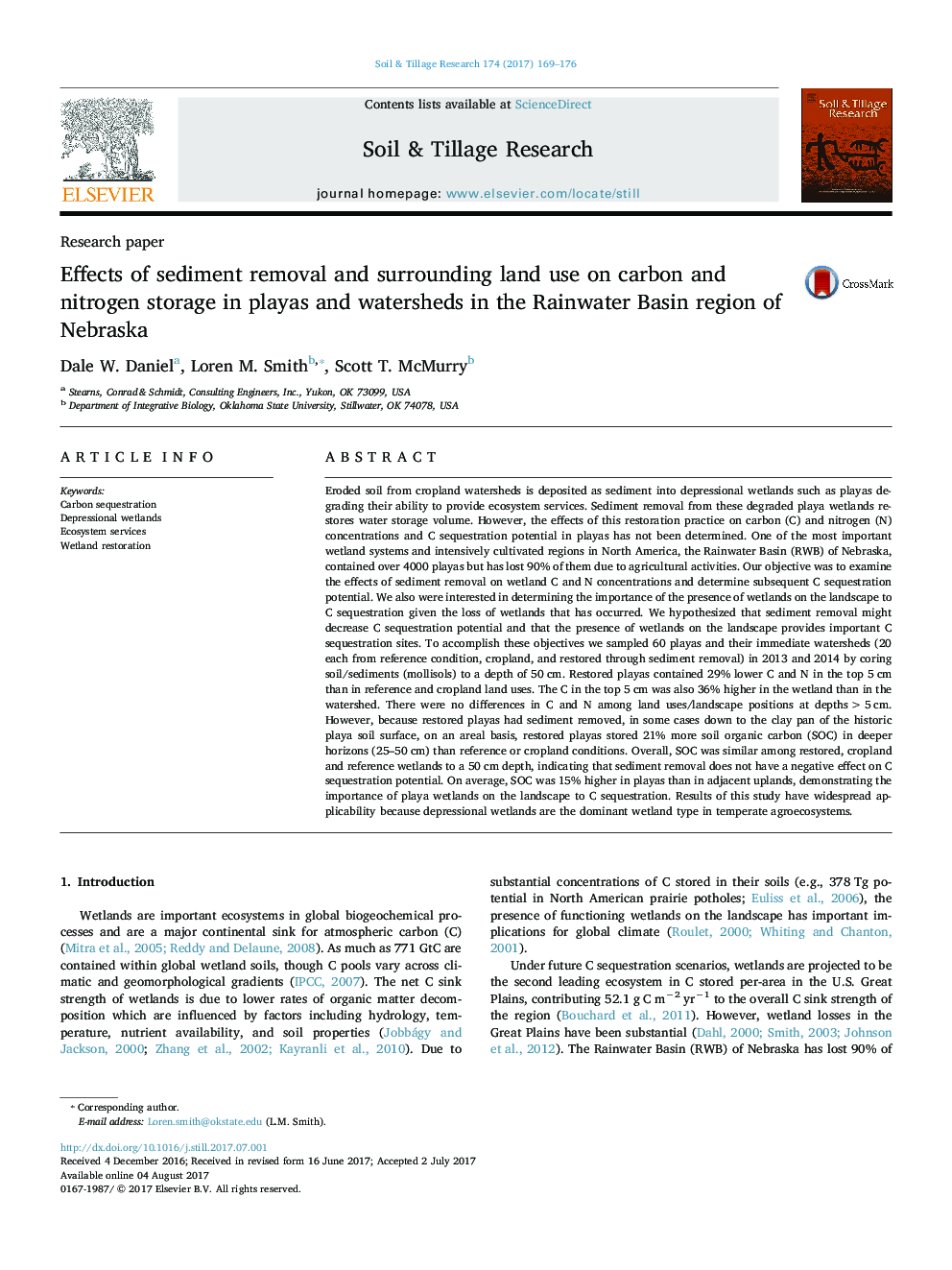| کد مقاله | کد نشریه | سال انتشار | مقاله انگلیسی | نسخه تمام متن |
|---|---|---|---|---|
| 4927465 | 1431829 | 2017 | 8 صفحه PDF | دانلود رایگان |
- Land use and restoration effects on carbon and nitrogen storage in wetlands/uplands.
- Sediment removal from degraded playas does not negatively influence carbon storage.
- Playas store 15% more carbon than uplands making wetlands important storage sites.
- Carbon storage can be maximized by sediment removal and watershed restoration.
Eroded soil from cropland watersheds is deposited as sediment into depressional wetlands such as playas degrading their ability to provide ecosystem services. Sediment removal from these degraded playa wetlands restores water storage volume. However, the effects of this restoration practice on carbon (C) and nitrogen (N) concentrations and C sequestration potential in playas has not been determined. One of the most important wetland systems and intensively cultivated regions in North America, the Rainwater Basin (RWB) of Nebraska, contained over 4000 playas but has lost 90% of them due to agricultural activities. Our objective was to examine the effects of sediment removal on wetland C and N concentrations and determine subsequent C sequestration potential. We also were interested in determining the importance of the presence of wetlands on the landscape to C sequestration given the loss of wetlands that has occurred. We hypothesized that sediment removal might decrease C sequestration potential and that the presence of wetlands on the landscape provides important C sequestration sites. To accomplish these objectives we sampled 60 playas and their immediate watersheds (20 each from reference condition, cropland, and restored through sediment removal) in 2013 and 2014 by coring soil/sediments (mollisols) to a depth of 50Â cm. Restored playas contained 29% lower C and N in the top 5Â cm than in reference and cropland land uses. The C in the top 5Â cm was also 36% higher in the wetland than in the watershed. There were no differences in C and N among land uses/landscape positions at depths >5Â cm. However, because restored playas had sediment removed, in some cases down to the clay pan of the historic playa soil surface, on an areal basis, restored playas stored 21% more soil organic carbon (SOC) in deeper horizons (25-50Â cm) than reference or cropland conditions. Overall, SOC was similar among restored, cropland and reference wetlands to a 50Â cm depth, indicating that sediment removal does not have a negative effect on C sequestration potential. On average, SOC was 15% higher in playas than in adjacent uplands, demonstrating the importance of playa wetlands on the landscape to C sequestration. Results of this study have widespread applicability because depressional wetlands are the dominant wetland type in temperate agroecosystems.
Journal: Soil and Tillage Research - Volume 174, December 2017, Pages 169-176
